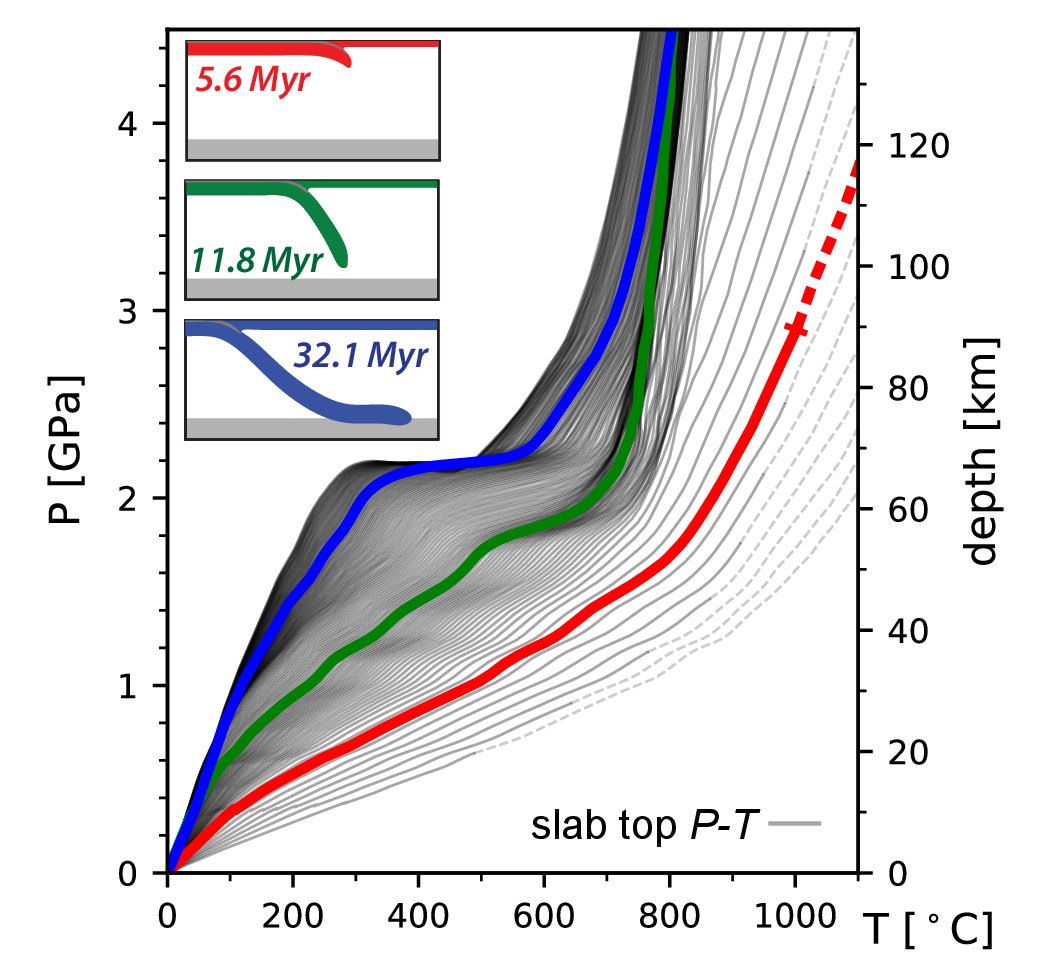Research
We investigate the causes, rates, and scales of deformation at plate boundaries, within plates, and in the underlying mantle. To achieve this, we integrate a range of geodynamic modeling techniques with geological and geophysical observations. Some of our current and ongoing research avenues are outlined below:
1) Regional subduction dynamics: We use both analytical and numerical modeling approaches to constrain subduction zone dynamics, with a focus on the links between sub-plate processes (e.g., mantle flow and pressure) and near-surface deformation (e.g, topography, plate velocities, tectonics). A relatively recent focus has been on the processes that dictate tectonic observables within geometrically complicated “double subduction” zones, both in general (Holt et al., 2017, GJI; Király et al., 2018, G-Cubed) and as applied to the Caribbean, Western Pacific, and India-Eurasian subduction zones (Faccenna et al., 2017, Tectonophys.; Holt et al., 2018, GJI)
 2) Subduction zone thermal structure, metamorphism, and dehydration: We use numerical subduction models to investigate the feedbacks between geodynamic subduction properties (e.g., slab dip, convergence rate), subduction zone thermal structure, and the petrological phase transformations that occur within dynamically evolving subduction zones. The figure shows a time-dependent slab-top temperature evolution from one of our recent numerical models (Holt and Condit, 2021, G-Cubed). We are currently extending these generic models to specific subduction zones, and more rigorously integrating the geodynamic (slab evolution) and petrologic (metamorphic phase transitions and dehydration) components of our subuction modeling approach.
2) Subduction zone thermal structure, metamorphism, and dehydration: We use numerical subduction models to investigate the feedbacks between geodynamic subduction properties (e.g., slab dip, convergence rate), subduction zone thermal structure, and the petrological phase transformations that occur within dynamically evolving subduction zones. The figure shows a time-dependent slab-top temperature evolution from one of our recent numerical models (Holt and Condit, 2021, G-Cubed). We are currently extending these generic models to specific subduction zones, and more rigorously integrating the geodynamic (slab evolution) and petrologic (metamorphic phase transitions and dehydration) components of our subuction modeling approach.
3) Plate tectonic analyses: We derive geodynamics expressions, or “rules”, to explain present-day tectonic observations (e.g., trench migration rates and directions). To do this, we focus on evaluating the validity of simple mechanical models - e.g., static force balances - to reproduce plate tectonic observables. Such rules can, in turn, be applied to evaluating the geodynamic validity of plate reconstructions (e.g., Clennett et al., 2023, Sci. Rep.), as these are usually constructed without explicit consideration of the dynamic feasibility of reconstructed plate behavior.
 4) Global subduction and mantle dynamics: We are developing methods to investigate the strength and nature of mechanical interactions between regional plate boundaries and global-scale mantle circulation. We have developed analytical models of slab-induced mantle flow within a global upper mantle (Holt and Royden, 2021, G-Cubed) and used these to argue that Earth’s slab dip distribution is controlled by global-scale mantle flow patterns. We have also constructed global-scale numerical subduction models to validate the results of these more idealized analytical models; an example of which is shown on the left (Holt, 2022, GRL). We are currently modifying and applying this numerical approach to investigate the imprint of global-scale mantle flow on Western Pacific subduction zone behavior.
4) Global subduction and mantle dynamics: We are developing methods to investigate the strength and nature of mechanical interactions between regional plate boundaries and global-scale mantle circulation. We have developed analytical models of slab-induced mantle flow within a global upper mantle (Holt and Royden, 2021, G-Cubed) and used these to argue that Earth’s slab dip distribution is controlled by global-scale mantle flow patterns. We have also constructed global-scale numerical subduction models to validate the results of these more idealized analytical models; an example of which is shown on the left (Holt, 2022, GRL). We are currently modifying and applying this numerical approach to investigate the imprint of global-scale mantle flow on Western Pacific subduction zone behavior.
